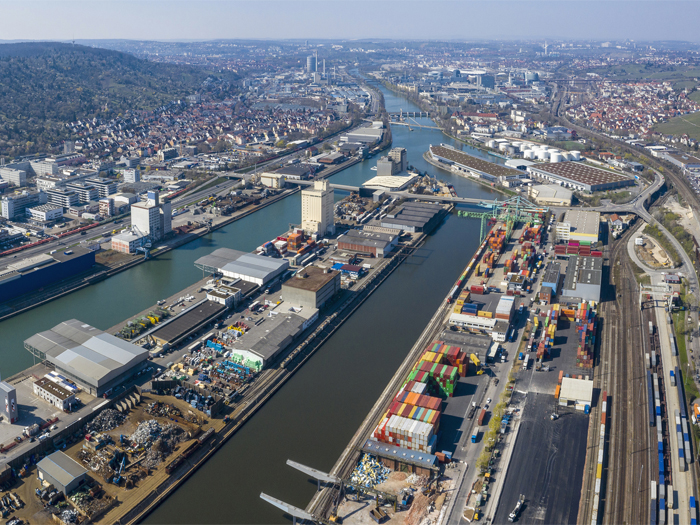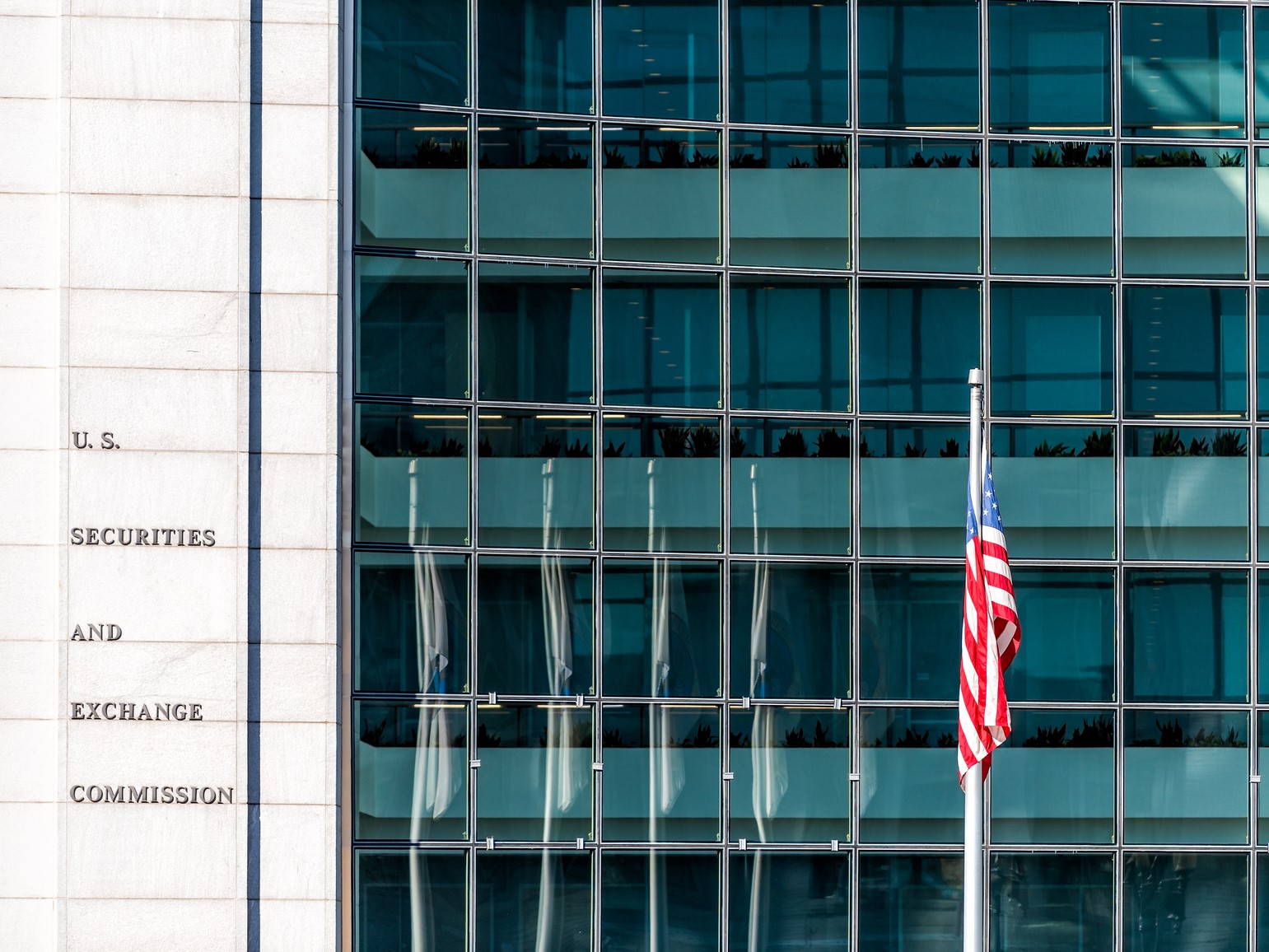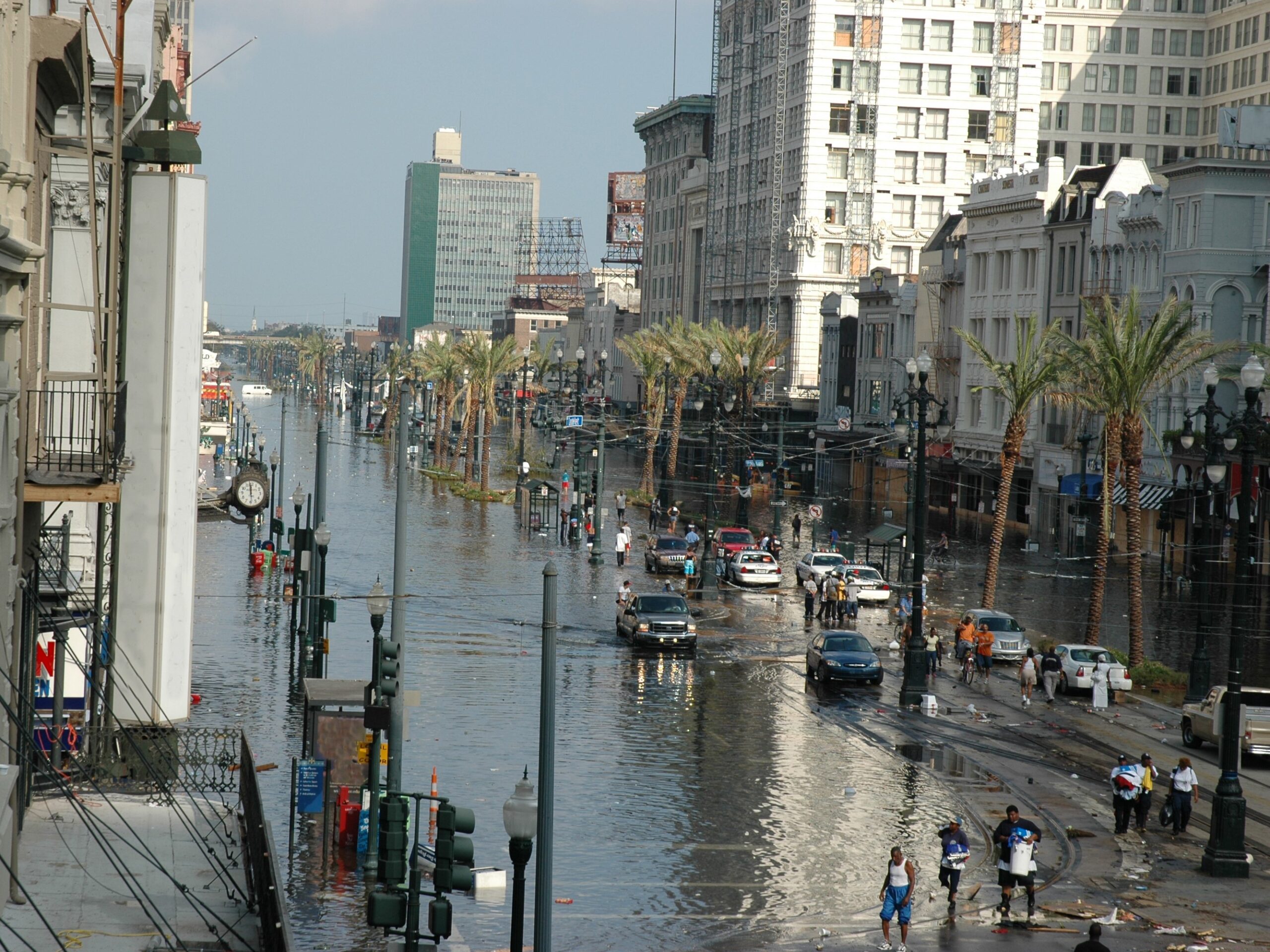Amy Barnes and Jonathan Lee on How to Make Supply Chains Greener and More Resilient

At RISKWORLD 2024 in San Diego, Risk & Insurance® had a chance to speak with Amy Barnes, Marsh’s head of climate & sustainability strategy and a member of Marsh McLennan’s Sustainability and Climate Change program, and Jonathan Lee, a partner at Oliver Wyman.
Our conversation touched on the growing prominence of supply chain risks, how climate change can disrupt manufacturing and shipping, and the launch of Sentrisk, Marsh McLennan’s new platform for modeling multiple tiers of suppliers to predict and manage supply chain-related business interruption.
What follows is a transcript of that conversation, edited for length and clarity.
Risk & Insurance: Could you describe your roles and how they relate to operational risk and supply chain issues?
Amy Barnes: As the leader of climate and sustainability strategy for Marsh, my primary focus is on how we serve our clients and organize ourselves around climate issues.
It’s crucial to think beyond the obvious impacts of climate change on our clients’ own assets and businesses. We must consider the entire ecosystem they operate in, including supply chains.
I spend a significant amount of time exploring how climate disruptions could affect not only a company’s owned assets but also their suppliers, their suppliers’ suppliers and the infrastructure connecting them all.
Jon Lee: As a partner in Oliver Wyman’s digital practice. I help clients build digital platforms and capabilities and launch digital businesses. My passion lies in bringing together different disciplines and technologies to solve the most challenging problems.
We have been dedicating significant effort to exploring the application of modern technology to operational risk. This has led to a partnership between Oliver Wyman and Marsh, where we combine our expertise to solve supply chain problems that we know our clients are facing all across the world.
R&I: Over the past five years, the phrase “supply chain” has gone from business jargon to a household word. What’s driving that, and what factors continue to make supply chains such a prominent issue today?

Amy Barnes, head of climate & sustainability strategy, Marsh
AB: Supply chain disruptions have always existed, but they weren’t a mainstream concern until COVID-19 highlighted the vulnerabilities in supply chains. The pandemic caused significant disruptions not just to logistics but also to manufacturing, with ripple effects lasting for years.
Subsequent shocks like the Ukraine war and climate-related events such as the floods in South Africa further exposed supply chain vulnerabilities. For example, the South African floods in 2021 caused lead times for certain European trucks to exceed 12 months, significantly disrupting the automotive manufacturer’s business.
JL: While supply chain problems have been increasing, even just a few years ago, most companies would note that there’s only so much that could be done to get ahead of the problem because it was just too difficult to obtain information past the Tier 1 supplier level to understand true risk exposure. Most clients would almost accept disruptions as part of running a business because they lacked a cost-effective and dependable way to map out their supply chains and figure out the intricacies.
However, this has changed with the advent of new capabilities such as AI-powered supply chain mapping and the use of geospatial intelligence. These capabilities now allow us to provide actionable intelligence to address supply chain issues, something that wasn’t possible even with large budgets and teams just five years ago.
R&I: What distinguishes manufacturing disruptions from logistics disruptions? Are logistics disruptions becoming more frequent due to climate change?
AB: I make the distinction between manufacturing and logistics disruptions through a climate lens. While there are many threat vectors that can disrupt supply chain logistics, we are witnessing an increasing number of climate-related disruptions in this area.
In 2022, a drought in the Mississippi River reduced U.S. grain exports by 45%. Major European rivers have also experienced droughts, and the Panama Canal’s traffic has been reduced … due to drought conditions. These structural issues are significant, and areas prone to droughts are also likely to experience floods, further causing disruptions.
The challenge with climate-related logistics disruptions is that they often lead to longer shipping routes, increasing both the carbon footprint and the cost of the product. For example, when the Panama Canal is not fully operational, ships must take a longer route around the south, nearly doubling the shipping time and cost, as fuel accounts for such a significant part of the cost of shipping, increasing the carbon footprint.
R&I: What is the connection between building resilient supply chains and corporate ESG strategies for sustainability?
AB: Climate change impacts supply chains in ways beyond just causing damage to assets through events like flooding. Many industries heavily rely on ecosystem services provided by the climate, such as water. For example, in Taiwan, rice farmers have been paid not to farm so that there is enough water for the semiconductor industry. Companies need to consider not just the potential for climate-related damage, but also the risk of losing access to vital resources.
When it comes to corporate ESG and sustainability commitments, most have focused on decarbonizing businesses by reducing the carbon footprint and carbon intensity of products. There have been fewer commitments around improving resilience to climate change, partly because it is more challenging to quantify and measure resilience compared to measuring units of carbon.
Additionally, there is a growing understanding that companies need to look beyond just carbon and consider their impact on nature, biodiversity and protected areas. Regulators, particularly in Europe, are increasingly holding companies accountable for their entire business ecosystem, not just their own production facilities. This is driving a shift in mindset and leading more companies to seek help in assessing the aggregate environmental impact of their supply chains, including tier two, three and four suppliers.
While this expanded focus is largely being driven by European regulations at the moment, it will also impact many large American organizations with a European footprint due to the size of that trading block.
R&I: What are the key challenges in achieving transparency into the complex global supply chains of companies, especially when components come from numerous suppliers across many countries?

Jonathan Lee, partner, Oliver Wyman
JL: The problem of supply chain transparency is multifaceted. Mapping the supply chain and identifying additional suppliers is only part of the challenge. The crucial aspect is understanding how everything connects — which parts go into which components and products, and how a disruption in one area impacts the entire business.
We approach this challenge in two ways. First, there have been technological breakthroughs with intelligent systems that scrape shipping manifests and customs data to identify observed shipments of goods. Advancements in object detection and asset intelligence obtained from satellite imagery allows us to understand what’s happening at each location. However, these technologies need to be scalable, repeatable and affordable for the average corporate client.
Second, and equally important, we have industry experts, supply chain specialists, business continuity experts and climate strategists who study the data collected to convert signals into meaning. But this is extremely labor-intensive. So we codify this expertise into our systems, enabling us to automatically look for patterns in the data that align with their knowledge and thinking.
Essentially, we can create programs that think like our best experts and feed them with powerful data to create new insights into what’s really going on in a company’s supply chain. There will always be parts requiring deeper manual investigation, but we can now handle the hardest and most unwieldy parts, in a much more efficient and optimized way. This allows us to focus our energy on actual problem-solving and decision-making based on the insights uncovered.
R&I: What are the emerging pain points that clients are coming to you with recently?
AB: At the insurance level, coverage for contingent business interruption (CBI) has been severely restricted since the Thai floods in 2011, both in terms of breadth and sublimits. Clients want better protection for financial volatility from their supply chain.
Clients are asking how they can enhance their CBI schedules to access better coverage. Beyond insurance, clients want to understand and manage their supply chain risks across various frameworks, such as structural bottlenecks, concentrations and external perils like geophysical, climate change, geopolitical, credit or cyber risks.
Clients are seeking support for their supply chain strategy to de-risk the entire process. Some have very specific questions, like understanding their exposure to nature risks such as illegal deforestation or unsustainable palm oil in their supply chain.
JL: Clients are at different stages of their supply chain risk management journey. Many are just beginning to understand what’s happening in their supply chain, while others have taken steps but feel overwhelmed by the complexity.
For example, one automotive manufacturer had 19,000 individual sites supplying components for a single product line. They need help making sense of the chaos and understanding what matters most.
Clients who have gained some insight often want to take action, such as optimizing business continuity, minimizing their impact on nature, biodiversity or carbon emissions, or optimizing their risk transfer plan. Our goal is to help clients progress from a state of helplessness to one of control, prioritizing their resources, time and energy to make incremental improvements.
R&I: How does Sentrisk fit into the bigger supply chain insurance picture?
AB: Sentrisk is an exciting development that we’ve recently shared with insurers.
The depth and breadth of supplier information it provides allows insurers to expand their product offerings, giving them the confidence to underwrite the broader coverage, higher limits and different products that clients have been seeking.
Insurers have expressed a strong desire to innovate, and Sentrisk provides them with the tools to manage their risks effectively. It’s empowering significant innovation in the industry and redesigning the way businesses manage global supply chain risk. &










